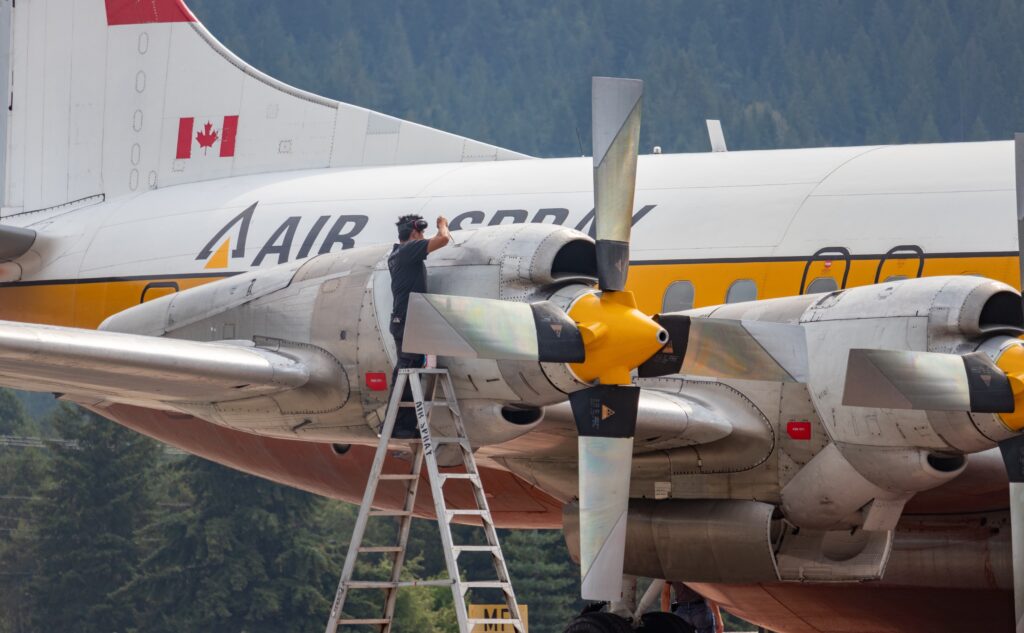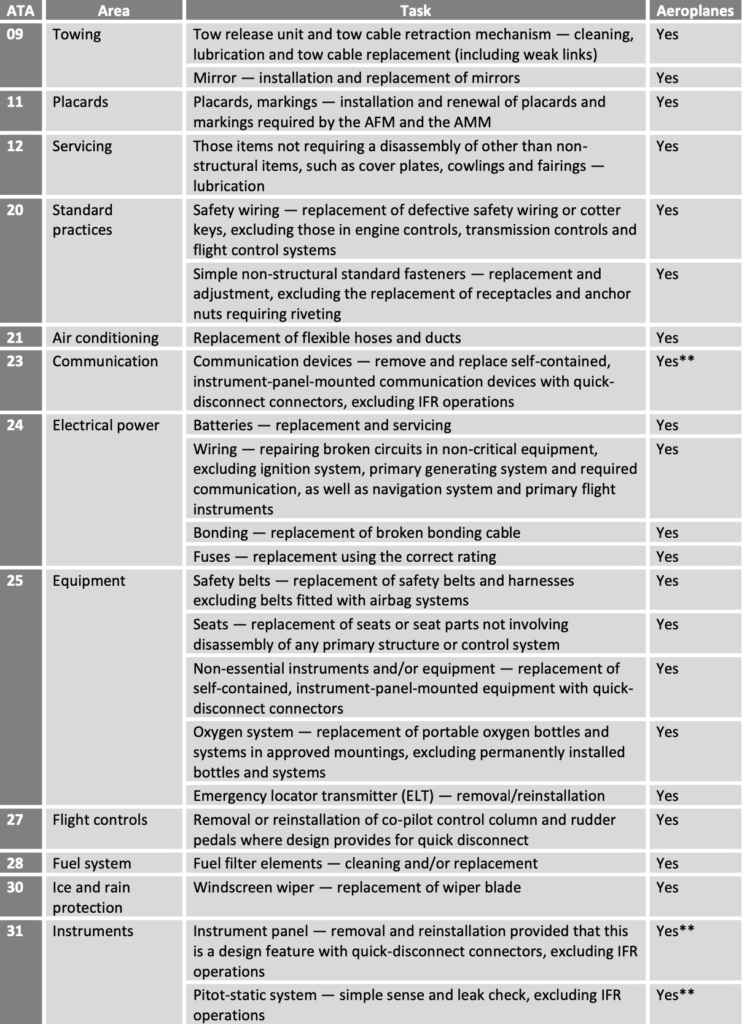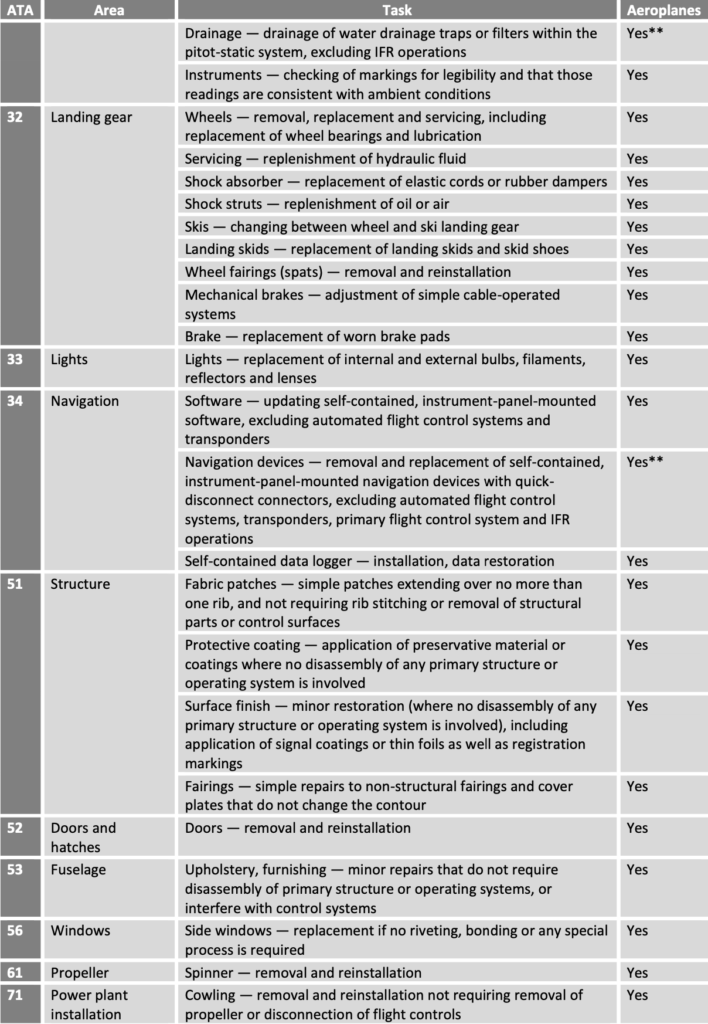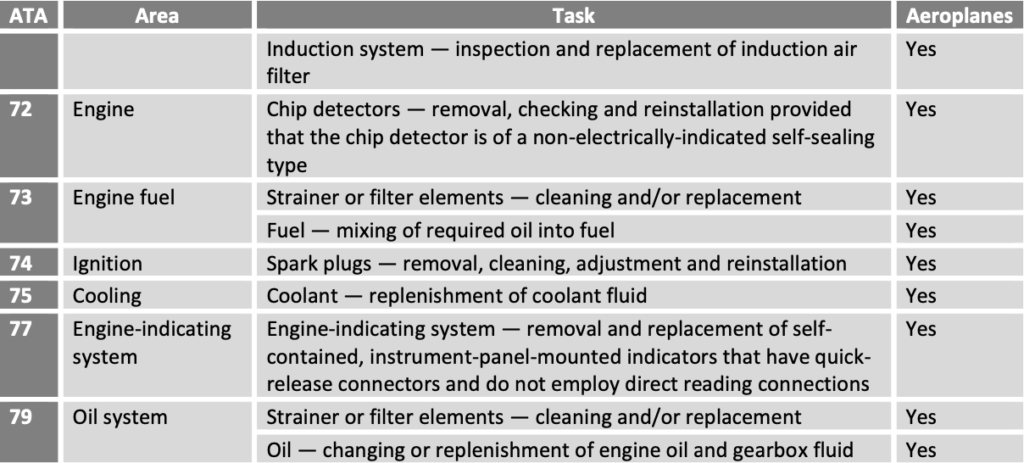
Pilot-Owner Maintenance
Top Five Reasons Why You Should Engage in Pilot-Owner Maintenance - It's Not Just About Money
Active involvement in your aircraft’s maintenance is a key aspect of aircraft ownership. While you don’t need to handle tools beyond your skills, staying engaged offers valuable insights. As highlighted in our previous article, Taking Control of Your Aircraft Maintenance, this understanding of aircraft systems and their maintenance proves beneficial on multiple fronts.
Knowledge, Skill, and Aptitude
It’s not our claim that everyone should handle their aircraft repairs. Rather, pilot-owners should participate in their aircraft’s upkeep. If you struggle to comprehend and adhere to instructions, or believe you’re above the rules, refrain from direct maintenance. If uncertain about your ability or if you’re new to maintenance tasks, team up with your aircraft mechanic. Seek their guidance and perhaps shadow them during specific repairs.
Consider maintenance training courses tailored to various knowledge levels. They can pave the way for your pilot-owner maintenance journey. I recently completed several Rotax engine courses, termed independent Rotax Maintenance Training (iRMT), in Germany at Franz Aircraft Engines Vertrieb GmbH. I vouch for the quality of these courses. Likewise, Continental and Lycoming offer similar training opportunities.
Instructions for Continuing Airworthiness and Practices
When performing pilot-owner maintenance, always use the most recent Instructions for Continuing Airworthiness (ICA). Adhere to standard and accepted methods, techniques, and practices. Only tackle maintenance tasks when you’re clear about the procedures and the relevant regulations.
Note: The ICA comprises descriptive data, maintenance planning, and accomplishment instructions. A Design Approval Holder (DAH) formulates these in line with the certification basis for the aeronautical product.
Regulation
Before working on your aircraft, you must understand the pertinent regulations for pilot-owner maintenance. In Europe, Annex Vb (Part-ML) of the Continuing Airworthiness (Regulation (EU) No 1321/2014) is relevant for many of us. Part-ML pertains to non-complex motor-powered aircraft not on the air operator certificate of an air carrier. This encompasses airplanes with a maximum take-off mass (MTOM) of 2,730 kg or less, rotorcraft of 1,200 kg MTOM or less, certified for up to 4 occupants, and other ELA2 aircraft.
Note: ‘ELA2 aircraft’ refers to the following manned European Light Aircraft:
(i) An airplane with an MTOM of 2,000 kg or less, not classified as a complex motor-powered aircraft.
(ii) A sailplane or powered sailplane with an MTOM of 2,000 kg or less.
(iii) […]
Note: A ‘complex motor-powered aircraft’ is:
(i) An airplane with:
- An MTOM over 5,700 kg, or
- Certification for over nineteen passengers, or
- Certification for a two-pilot minimum crew, or
- Equipped with turbojet engine(s) or multiple turboprop engines.
(ii) A helicopter certified:
- With an MTOM over 3,175 kg, or
- For seating more than nine passengers, or
- For a two-pilot minimum crew.
(iii) A tilt rotor aircraft.
Appendices of Part-ML
Part-ML covers sections on applicability, scope, responsibility, and other key facts. It features four appendices crucial for pilot-owner maintenance. Appendix II (Limited Pilot-owner maintenance) outlines the pilot owner’s competence and responsibilities. It specifies tasks not to be released by the pilot-owner and details on performing and recording pilot-owner maintenance tasks. AMC1 to Appendix II to Part-ML—Limited pilot-owner maintenance provides a list of such tasks (see below). However, this list isn’t exhaustive. Tasks meeting Appendix II to Part-ML requirements can also be pilot-owner tasks. Appendix III lists complex tasks that the pilot-owner shouldn’t release.



Aircraft Maintenance Programme
When drafting the Aircraft Maintenance Programme (AMP), always include the name(s) and pilot licence number(s). For jointly owned aircraft, you can reference a list.
Our Top Five Reasons
At first, pilot-owner maintenance may seem intimidating. However, as you gain experience, you’ll likely find it enjoyable and beneficial in tackling both maintenance and other challenges. Here are five compelling reasons to consider pilot-owner maintenance:
Reason #1: Flight Operations
Engaging in your aircraft’s maintenance enhances your expertise as an operator. By understanding your aircraft and its systems, you’re better equipped to address in-flight issues swiftly and decisively.
Reason #2: Maintenance Decisions
In many situations, clear quantitative measures aren’t available. However, a deep understanding of maintenance can guide informed decisions. This knowledge helps you determine if action is immediate, can wait, or if you should monitor the condition. It also aids in deciding whether to repair, overhaul, rebuilt, or replace and install new components.
Reason #3: Troubleshooting
As a pilot-owner, you bear the primary responsibility for troubleshooting. You shall know the issues that might arise and their potential causes. Often, these issues can’t be replicated on the ground. An aircraft mechanic, given a vague problem description without a way to replicate it, might end up making costly, inefficient fixes. With a deep understanding of your aircraft and its systems, you can accurately troubleshoot and address the issue. This might mean fixing it yourself or hiring a mechanic to tackle just the identified problem, saving money.
Reason #4: Trust, but Verify
I recently spoke with an aircraft mechanic unaware of my professional background and advocacy for data analysis and pilot-owner maintenance. He mentioned customers who complained about high cylinder heat temperature (CHT) on one cylinder. Without a resolution, he simply switched the lead from the problematic cylinder to a subjectively good one. Whether the customer was being unreasonable or the engine had genuine issues, this experience reinforced my belief in pilot-owner involvement in maintenance. An informed pilot-owner can discern problems, find solutions, and ensure mechanics don’t take advantage of them.
Reason #5: Satisfaction
For many pilot-owners, gaining knowledge and hands-on experience with their aircraft brings immense satisfaction. It’s rewarding to understand your aircraft inside and out. Every pilot should have the chance in their career to deeply understand their aircraft’s operations, systems, and maintenance. Moreover, with this knowledge and skill, it becomes easier to maintain an aircraft in top condition.
Conclusion
The world of pilot-owner maintenance, though initially intimidating, unfolds a multitude of benefits as one delves deeper. Beyond the technicalities lie profound advantages. Engaging in maintenance not only makes you a more informed operator but also empowers you with on-the-spot decision-making abilities during flights. It provides an avenue for making maintenance decisions with greater accuracy, especially in situations where quantitative measures fall short.
Troubleshooting is a personal task, being involved in aircraft maintenance ensures issues are addressed with a deep understanding of the aircraft’s unique quirks and systems. Trust, but Verify serves as a potent reminder of the importance of being involved and vigilant, ensuring that one isn’t taken advantage of by uninformed mechanics. Lastly, the sheer satisfaction derived from intimately knowing and working on one’s own aircraft cannot be overstated.
Pilot-owner maintenance is more than just a responsibility; it’s an enriching journey that enhances one’s connection with their aircraft, honing skills, building trust, and offering unmatched satisfaction.
About Quest Aeronautics
Quest Aeronautics is a state-certified engineering office for aviation, dedicated to shaping the future of general aviation by providing innovative and cost-effective solutions to enhance aircraft performance and operations. With a focus on CS/FAR-23 and experimental/amateur-built (E/A-B) aircraft, Quest Aeronautics provides a range of services including flight testing, aircraft operations and maintenance consulting, high-quality aviation products, and tailored support for E/A-B projects. Collaborating with industry-leading partners, Quest Aeronautics is committed to delivering unparalleled support and expertise to individuals and organisations in the general aviation market.
About Author
Sebastian, the founder of Quest Aeronautics, is a driven and enthusiastic individual with a passion for aviation. Before delving into aviation, he gained valuable experience as a chemical process engineer and laboratory technician. Sebastian holds a Master of Science in Engineering and a commercial pilot licence, with several fixed-wing aircraft ratings under his belt. He has also completed an introduction course for fixed-wing performance and flying qualities flight testing at the National Test Pilot School in Mojave, CA and is compliance verification engineer for flight.
